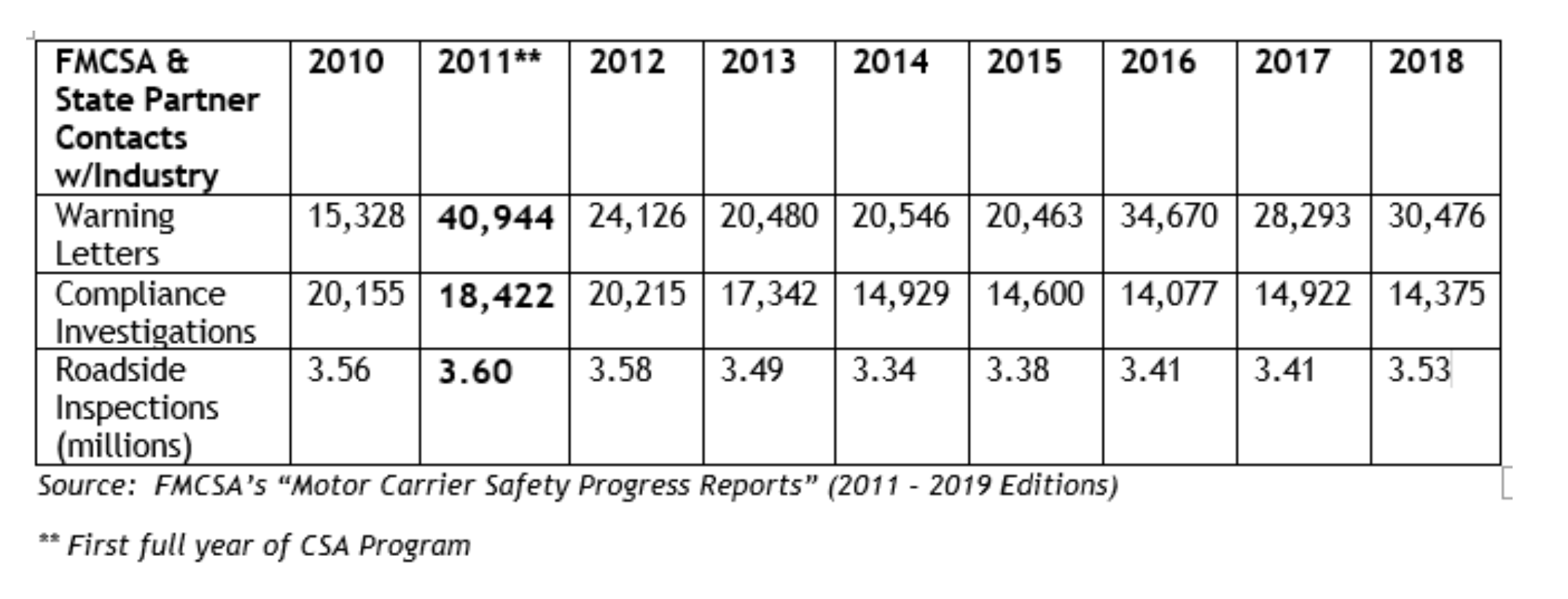When FMCSA’s Compliance, Safety, Accountability (CSA) program launched in 2010, its objectives were to:
- Increase contact with industry through increased efficiencies
- Maximize FMCSA and state partner resources
- Assess the safety fitness of a greater segment of the industry
- Bring about a greater reduction in large truck and bus crashes
In January, STC reviewed the truck crash data and trends to see if CSA is meeting objective #4 above. This month’s focus is objective 1 — to increase contact with industry through increased efficiencies. Increased efficiencies are important (for both government and industry), but STC believes the focal point of this objective is, “increase contact with industry.” There are three main types of “contacts” with the industry that FMCSA and its State enforcement partners undertake:
- Warning letters;
- Compliance investigations/audits; and
- Roadside inspections.
STC wondered whether CSA caused the number of contacts in each of these categories to increase between 2011 (the first full year of CSA) and 2018 (the latest year data are available).
What Do the Contact Numbers Show?
Despite good intentions, the number of contacts in each of the three categories went down between 2011 and 2018. A few numbers of note:
- The number of warning letters issued rose dramatically in CSA’s first full year of 2011, but was 25% lower in 2018;
- The number of compliance investigations was 22% lower in 2018;
- The number of roadside inspections, while relatively flat, was 2% lower in 2018.
For all its warts, CSA has increased carriers’ focus on safety and compliance, but it seems clear that it hasn’t come from an increased threat of enforcement. Readers that have analyses or theories on why the contact numbers didn’t increase, please share your thoughts with STC.



